Proper husbandry plays an important role in raising tortoises.
Most of the time, if you find a health-related issue with your tortoise, you can trace the problem to poor husbandry.
Some of these problems can be lethal, especially if not taken care of immediately. One such problem is tortoise prolapse.
Tortoise prolapse can be caused by any number of things, but the most common one is a blockage. Specifically, a prolapse can happen if there’s a blockage and your tortoise is straining, trying to pass it. Inflammation of an organ is also a leading cause of prolapse, where they are unable to retract a certain organ because of excessive swelling.
Whatever the cause, prolapse is a major health problem that needs to be fixed as soon as you notice them.
A huge part of treating and preventing issues like these is by understanding them. With this article, we are going to help you understand tortoise prolapse better.
What is Tortoise Prolapse?
Prolapse is a term used when an organ or body part either falls down or generally slips out of place.
A disc prolapse, for example, happens when a disc from your spine slides out of place. In the case of tortoises, a prolapse is when an organ, which is usually inside their bodies, slides outside, through their cloaca.
Now, tortoises, just like other reptiles, have a very unique structure for waste management and reproduction.
Basically, they all come out of the same hole. This hole is known as the cloaca or vent. Although this system is very efficient at waste disposal, it can be problematic when the cloaca gets blocked, as is the case with tortoise prolapse.
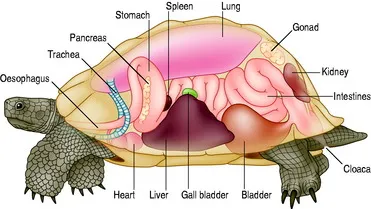
If your tortoise has intestinal prolapse, for example, which should only affect the gastrointestinal tract, they also won’t be able to pee or lay eggs. If the cloaca gets blocked, everything gets blocked.
Signs and Symptoms
One of the biggest giveaways to tortoise prolapse is when you see an organ protruding from the vent.
They would look like a pink or reddish mass where your tortoise’s cloaca should be. The mass is red because it is usually inflamed.
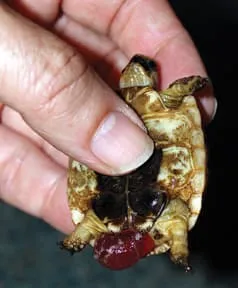
You should also notice your tortoise straining a lot, which looks like they are pulling their head into their shells, but slower and with more tremors.
Aside from that, your tortoise will also show signs of dehydration, lack of appetite, and little to no poop.
Not all organs found outside the body are the result of prolapse, however. Some male tortoises will push out their penises on purpose, either for display or boredom.
Tortoise penises are pretty large, usually taking up half of the tortoise’s length, and are dark pink in color. If it is indeed a result of display, it should retract on its own after a while.
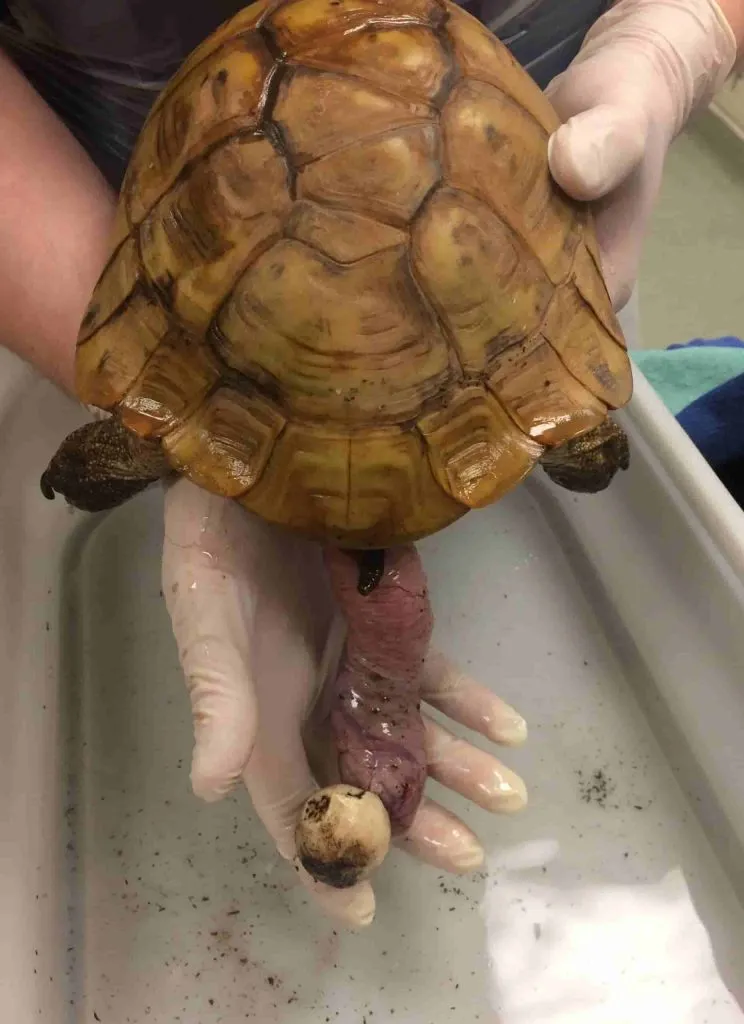
But if it’s a prolapsed penis, your tortoise will have difficulty retracting it and it would look swollen and reddish.
Types of Tortoise Prolapse
Although the cloaca is just one orifice, it’s actually connected to three other openings, each with its own specific use.
As luck would have it, tortoises can suffer a prolapse from each opening. And if one opening has a prolapse, the rest are affected. Here are the different types of tortoise prolapse.
Intestinal Prolapse
The most common type of prolapse that captive tortoises suffer from is intestinal, or colon prolapse.
This prolapse happens when the tortoise suffers from a blockage in their intestines, otherwise known as an impaction.
This is usually the result of your tortoise accidentally, or sometimes purposefully, swallowing its substrate. Any substrate that isn’t able to be digested blocks the gastrointestinal tract. It could also be caused by severe constipation.
Imagine feeling like you need to poop, but no matter how hard you bear down, nothing comes out. It’s the same way for tortoises, except that the more they strain, the more likely it is that they also push out a portion of their bowels.
Preventing this type of prolapse is fairly straightforward. Changing your tortoise’s substrate to something that they can easily pass, if not digest, is your best option.
Cocopeat and sphagnum moss are easily digestible, or at least would cause impaction.
Urinary Bladder Prolapse
Another common form of prolapse is one that happens when the urinary bladder is pushed out.
This can happen if your tortoise is suffering from a urinary tract infection, and their bladder becomes swollen. Straining is also a common cause, where a tortoise is trying to pass a bladder stone.
Urinary bladder prolapses caused by bladder stones are usually due to severe dehydration or nutritional imbalance, such as having too much calcium in the diet.
Simply improving the humidity levels inside your tortoise enclosure or giving your tortoise access to clean drinking water can help prevent this type of prolapse.
Uterine Prolapse
Uterine prolapse is a type of prolapse that is exclusive to female tortoises.
This prolapse occurs when the female pushes out their uterus through the cloaca. Usually, this happens when the female is suffering from dystocia or egg binding.
Egg binding happens when a tortoise is unable to expel the eggs they are trying to lay, causing a blockage. This may be caused by low calcium levels in the female, hindering their ability to contract their muscles.
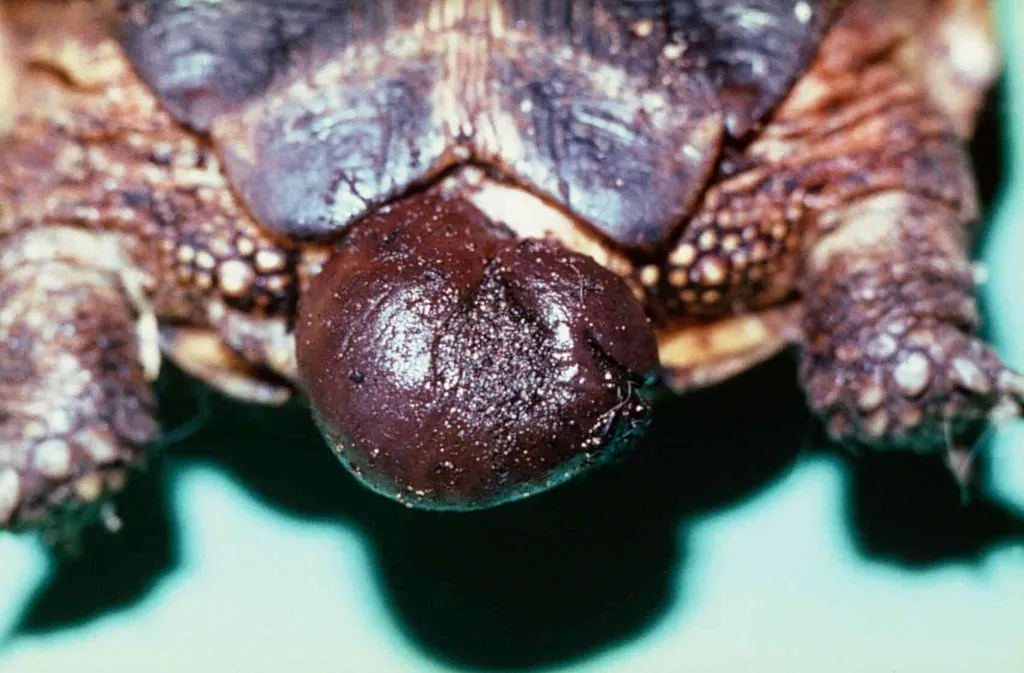
Luckily, however, this type of prolapse can be treated without surgical intervention. The female is usually given oxytocin to encourage muscle contraction, allowing the eggs to pass naturally. Of course, if that doesn’t work, surgery is the only option.
It is highly inadvisable to break the eggs inside the tortoise to remove the blockage. The resulting shell fragments can cut the female and cause infection.
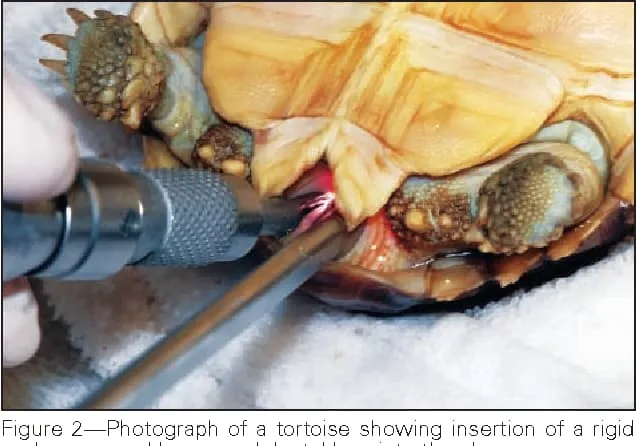
A good way to avoid uterine prolapse is to offer a well-balanced diet to your pregnant females. Offer them food rich in calcium but low in phosphorous.
You should also give them plenty of sunlight or UVB if that isn’t possible.
Penis Prolapse
This type of prolapse is pretty much exclusive to males and works differently from the others.
Usually, penis prolapse is the result of the tortoise being unable to retract its penis into its body, instead of them pushing the organ out by accident.
This usually happens when the penis gets injured, either during mating or due to fights with other tortoises, and becomes inflamed.
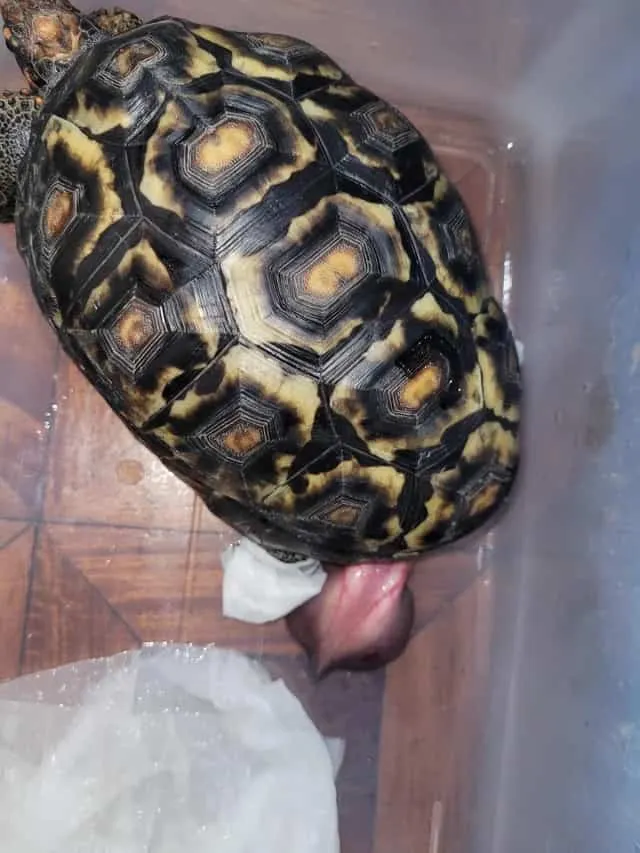
Once swollen, the tortoise becomes unable to retract their penis normally.
This prolapse can also be treated without the use of surgery.
The trick is to reduce the swelling as much as possible by rinsing it with clean water and gently pushing it back into the cloaca using soft objects, like cotton applicators.
What to do if Your Tortoise has a Prolapse
If you notice your tortoise has any type of prolapse and it doesn’t go away by itself, then you should take them to the vet immediately.
Prolapses will require minor surgery at the very least in order to treat properly. That said, there are a few things you can do to not only ease your tortoise’s discomfort but also minimize the damage already done.
These first-aid procedures are also important if you can’t take your tortoise to a vet immediately.
However, these procedures aren’t meant to be permanent, and you should still take your tortoise to the vet at your earliest convenience.
Quarantine your Tortoise
If you are keeping your affected tortoise with other tortoises, then it’s a good idea to take them to an isolated area.
This is to prevent injury and further damage, as the swelling might encourage other tortoises to bite the organ, given the coloration.
Putting your tortoise into quarantine also guarantees that it will be easier to clean the affected organ.
The isolation area should also be free of things that can scratch or puncture the prolapse. Lining the temporary habitat with newspaper or tissue paper should help.
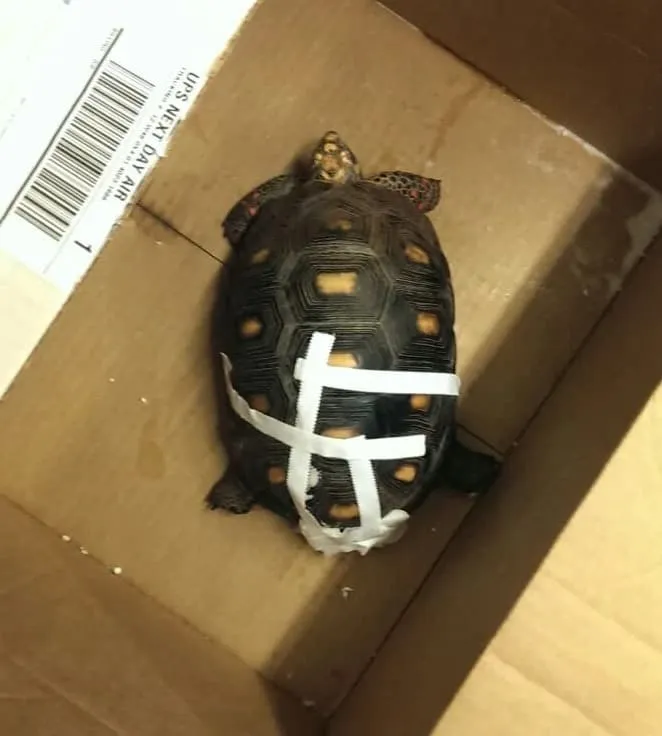
Clean the Area
The first thing you’ll need to do if you notice a prolapse is to clean the affected area.
Flush the area with clean, cool water. This can also help reduce the swelling, and if the swelling goes away somewhat, the prolapse may also retract on its own.
Make sure that if you use running water, it’s just a trickle. A strong enough current can damage the organ further.
Once the prolapse is clean, do not dry it with a towel. Let it air dry.
Reduce the Swelling
Once you’ve cleaned your tortoise’s prolapse, you should then try to minimize the swelling.
A good item to use is solutions with concentrated sugar content, like honey or simple table sugar. Leave the solution on for 30 minutes or so before rinsing it off thoroughly.
Once that is done, you should try lubricating the prolapsed area using KY Jelly. Keep the area clean by taping it up or covering it with gauze until you can take your tortoise to the vet.
Final Thoughts
Although prolapses can be terrible for your tortoise, even fatal, they are just symptoms of an underlying problem with the husbandry.
Poor husbandry can lead to irreparable damage to your tortoise. Despite this, however, the solution is rather simple: education and research.
If you know what’s missing, then fixing the problem is as simple as changing a lightbulb or adding something extra to your tortoise’s diet.
Don’t be afraid to ask questions, and don’t be afraid to learn.
